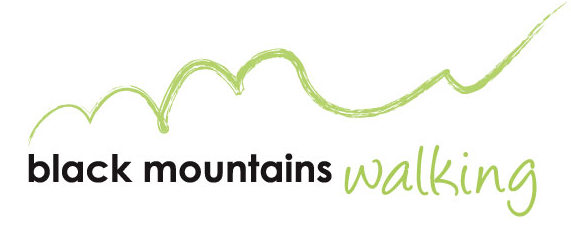You may know all the following, but if you don’t, please have a read through it all before you go into the hills and mountains on your own, and especially if you are taking a group.
The training offered by Black Mountains Walking can give you much more information on these topics. Please contact us for further details.
Whenever you go into the hills and mountains, make sure you are prepared and that everyone in the group is capable of completing your intended walk. Take the right kit, food and water; check the weather before you go; and know what to do in an emergency!
Select an icon below to view information on each of kit, weather and emergencies:
3. What to do in an emergency
• It can happen to the most careful, and well equipped people on the hill – you get lost, or someone in your party has an accident and is unable to move / get off the hill….
- Always try and get yourself off the hill, if at all possible.
- If you cannot do this safely…. DON’T PANIC
If you are lost
• STOP
- Have a look round to see if you can recognise anything around you (particular hill, steep ground, stream, farm building etc., and look for these on the map.
- Walk a short measured distance in each direction and return to where you started after each one. For example, walk 50 double-paces north to see if you can see anything that helps you identify where you may be. Then walk the 50 double-paces back (i.e. south) to where you started. Then walk 50 double-paces east, and return to where you started, and do the same to the south and then west (returning each time to where you started). If this does not help….
- If possible, can you get back to somewhere you definitely knew where you were?
- Do not wander around aimlessly
- If these do not work, call Mountain Rescue – see below.
If someone in your party is injured and they are unable to get off the hill safely
- Make sure that you, the rest of your group and the casualty are safe and in no immediate danger.
- Give appropriate first aid.
- Make sure everyone puts on clothing to stay warm and dry. Make sure everyone eats and drinks water to maintain energy levels.
- Work out where you are – 6 figure grid reference (the more accurate you get this, the sooner help will arrive).
Calling Mountain Rescue
Phone “999″, ask for “Police”, then “Mountain Rescue”
- Give the following information: –
- your name,
- details of the casualty and the nature of the injury,
- where you are – your (6 figure) grid reference (and the name of where you are, such as the hill or mountain).
- if you do not know where you are, give details of where and when you started, the direction you have been travelling, and as much information as possible to describe your route taken and what you can see around you.
- how many are in your party and what kit you have,
- your phone number – (Mountain Rescue may want to phone you for more information).
If you have no mobile signal, it will be necessary for a subgroup to gather the above information and go to find signal, such as up the nearest hill, walk to a nearby farm, village or road to seek assistance. Always make sure everyone knows the proposed route of the group seeking help. Do not leave the casualty alone unless there is no alternative.
Try to attract attention using the emergency signal -
The emergency signal is: –
- 6 blasts of the whistle, and repeat every minute
- and/or 6 flashes of the torch, and repeat every minute
- If you hear 3 whistle blasts, or torch flashes, then repeat the 6 blasts – someone is trying to get to you.
- Do not use your mobile phone unnecessarily – you may need plenty of charge to maintain contact with the emergency services.
Remember
Mountain Rescuers are all volunteers, and may be at work, home with their family or asleep in bed. They respond as quickly as possible to all calls, but they may have to travel a distance to their rv, to gather the information and the necessary kit to help you. They then have to find you. Consequently it can take some time for them to get to you. Reassure the casualty and the rest of your group whilst waiting for MR to get to you. Try to keep as warm and dry as possible.
The Team that covers the Black Mountains is Longtown Mountain Rescue Team. Click the link to their website: LMRT

